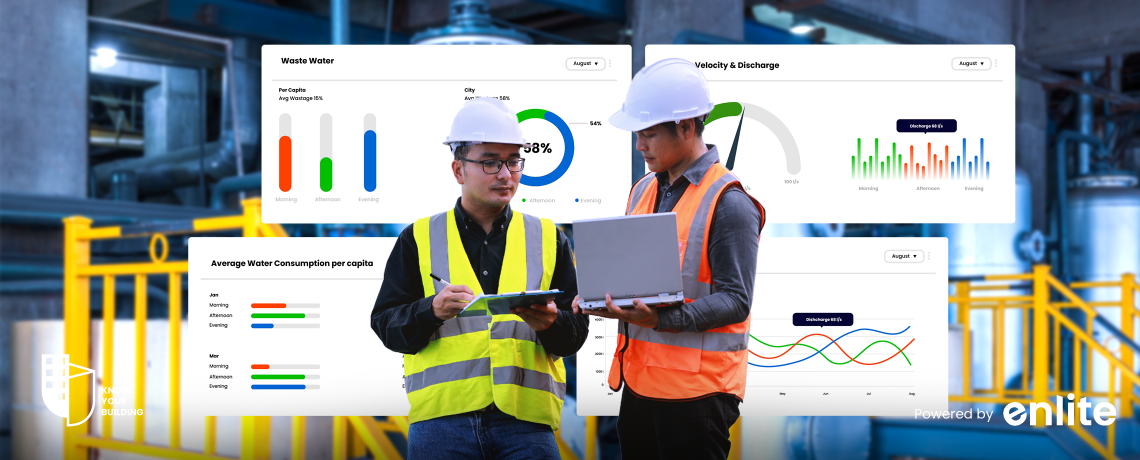Introduction
Water is a precious resource that sustains life on our planet. As the global population continues to grow, the demand for clean and safe water is increasing at an alarming rate. This heightened demand, coupled with the adverse effects of climate change, has put significant pressure on our water resources. Water scarcity and wastage have become critical issues that require immediate attention and innovative solutions. In both residential and commercial buildings, water is used extensively for various purposes, including drinking, sanitation, heating, and cooling. However, the inefficient use of water can lead to significant wastage and financial burdens. This is where water monitoring and management systems come into play. In this blog, we will delve into the importance of real-time water monitoring in buildings and how it can be the cornerstone of effective water management.
Understanding Water Management
Water management encompasses a set of practices and strategies aimed at optimizing water usage, reducing wastage, and ensuring a sustainable supply for current and future generations. Effective water management is crucial to address water scarcity issues, lower water bills, and reduce the environmental impact of excessive water consumption. Here are some key aspects of water management:
Conservation: Water management involves adopting water-efficient technologies and practices to minimize consumption. This includes the use of low-flow fixtures, rainwater harvesting, and recycling treated wastewater for non-potable purposes.
Monitoring: Real-time water monitoring systems play a pivotal role in water management. These systems continuously track water usage patterns, detect leaks, and provide valuable data for decision-making.
Maintenance: Regular maintenance of plumbing systems is essential to prevent leaks and ensure that water fixtures are operating efficiently.
Education: Raising awareness about the importance of water conservation and providing guidance on efficient water use is an integral part of water management.
Now, let’s dive deeper into the role of real-time water monitoring in achieving effective water management.
Real-Time Water Monitoring: A Game Changer
Real-time water monitoring is a technology-driven approach to track and manage water usage in buildings. It involves the installation of sensors and meters that collect data on water consumption, flow rates, and other relevant parameters. Here are some key advantages of implementing real-time water monitoring systems:
Identifying Water Wastage: Real-time monitoring systems can quickly detect anomalies in water usage, such as unexpected spikes or continuous flow during non-operational hours. These anomalies often indicate leaks, which, if left unaddressed, can result in significant water wastage.
Leak Detection: One of the most significant benefits of real-time water monitoring is its ability to detect leaks promptly. Even minor leaks can add up to substantial water wastage over time. By identifying and addressing leaks in real-time, building owners can save both water and money.
Data-Driven Decision Making: Water monitoring systems provide valuable data that can be used to make informed decisions about water usage. This includes optimizing irrigation schedules, adjusting water pressure, and identifying areas where water-saving technologies can be implemented.
Cost Savings: By reducing water wastage and optimizing water usage, real-time monitoring can lead to substantial cost savings on water bills. These savings can make a significant difference for both residential and commercial building owners.
Environmental Benefits: Efficient water management, facilitated by real-time monitoring, contributes to environmental sustainability by conserving this precious resource and reducing the energy required for water treatment and distribution.
FAQs about Real-Time Water Monitoring
Q1: How does real-time water monitoring work?
Real-time water monitoring systems typically involve the installation of sensors and meters at various points in a building’s plumbing system. These sensors continuously collect data on water consumption, flow rates, and other relevant parameters. This data is transmitted to a central monitoring system, where it is analyzed in real-time. Any anomalies, such as leaks or excessive usage, trigger alerts for immediate action.
Q2: Can real-time water monitoring be retrofitted into existing buildings?
Yes, real-time water monitoring systems can be retrofitted into existing buildings. While it may require some modifications to the plumbing system, the installation process is generally non-disruptive and can provide substantial benefits in terms of water savings and cost reduction.
Q3: What is the cost of implementing a real-time water monitoring system?
The cost of implementing a real-time water monitoring system varies depending on the size of the building and the complexity of the installation. However, the upfront cost is often offset by long-term savings on water bills and reduced maintenance costs due to timely leak detection.
Q4: What are the environmental benefits of real-time water monitoring?
Real-time water monitoring contributes to environmental sustainability by conserving water resources and reducing the energy required for water treatment and distribution. It also helps mitigate the environmental impact of leaks and water wastage.














